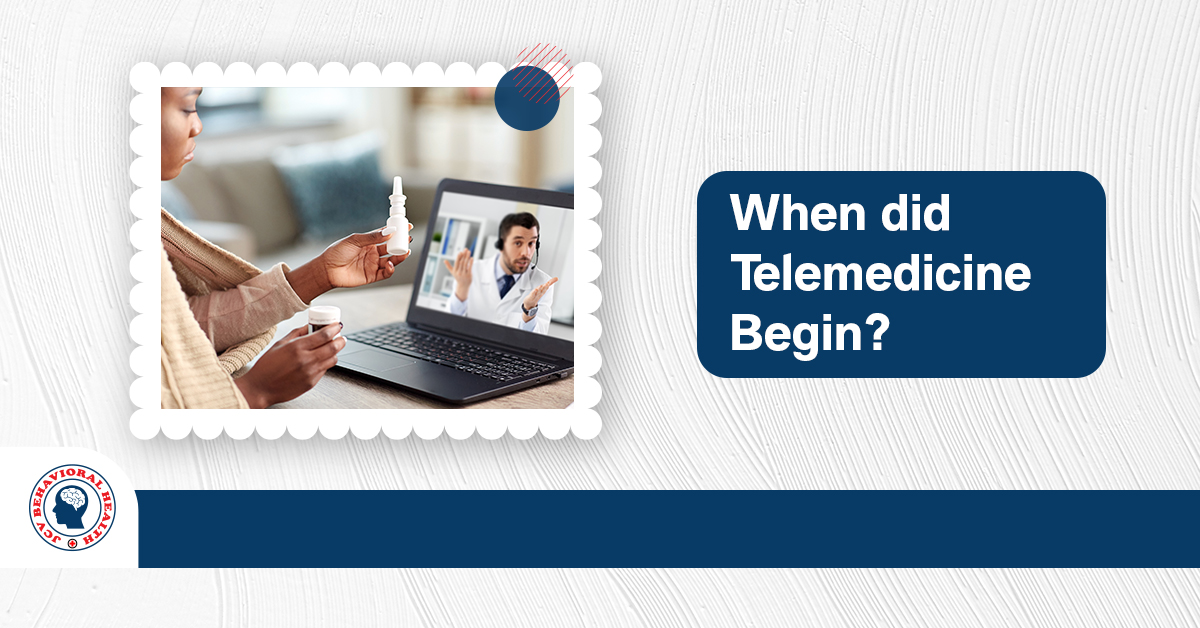Have you ever thought of the question: When did telemedicine begin in the modern world?
It’s an integral part of the current healthcare services and its roots are as thrilling as its innovative promise.
Join us as we explore the history of telemedicine.
The Early Days: Foundations of Telemedicine
The Birth of Communication Technology
Telemedicine counts on communication tech to bring together patients and doctors.
Its beginning is linked to the late 19th and early 20th centuries, right after the phone was invented. This game-changing tool let people talk long distances, opening the door for remote medical consultations.
Radio: A New Era of Medical Communication
In the early 20th century, radio played a key part in telemedicine’s progress. Sailors began using radio to share health problems with land doctors, serving as a crucial link for those split by vast ocean expanses.
It was the first time tech overcame geographic hurdles in healthcare.
The Advent of Telemedicine in the Modern Era
When did Telemedicine Begin to Take Shape?
So when did telemedicine start? The concept of telemedicine as we know it today began taking shape in the 1960s and 1970s.
NASA played a big part then. They worked on telemedicine to keep an eye on the health of astronauts in space. It was a stepping stone for using telemedicine on our planet.
Key Milestones in the 20th Century
- 1960s: There were psychiatric consultations that were conducted using closed-circuit television tech. This happened between the Nebraska Psychiatric Institute and Norfolk State Hospital. It was one of the first uses of virtual meetings in medicine.
- 1970s: Telemedicine was used by the Indian Health Service. They used it to give health services to Native American communities in hard to reach areas. This showed us how telemedicine could help get healthcare to places that are tough to access
The Growth of Telemedicine in Our Digital World
The Rise of the Internet
The internet came about in the 1990s and it changed telemedicine big time. With better, simpler digital tools, telemedicine went beyond just a test stage.
The internet made video consults possible. It made it safe to share data. And it allowed access to patients all over the world.
21st Century Innovations
As tech advanced, so did telemedicine. Mobile phones, applications, and wearable gadgets brought health services to our fingertips.
These tech breakthroughs made digital healthcare more user-friendly and handy, empowering patients to manage their well-being with ease.
The Impact of Telemedicine Today
Revolutionizing Access to Healthcare
Today, telemedicine plays a crucial role in making healthcare accessible, especially in remote and underprivileged regions.
Patients can now touch base with experts without traveling far, saving time and resources.
Telemedicine in the Time of COVID-19
The COVID-19 pandemic was a major turning point for telemedicine.
s worldwide lockdowns and social distancing norms came into play, digital healthcare emerged as a secure, effective way to keep up healthcare services.
It proved it worth in assuring care continuity.
The Future of Telemedicine
Continual Growth and Innovation
The road ahead for telemedicine involves growth and innovative ideas.
With progress in artificial intelligence, machine learning, and virtual reality, telemedicine will improve. It’ll offer more tailored and streamlined health treatments.
Embracing Telemedicine in Everyday Life
As telemedicine starts to weave into our daily routines, it helps dissolve health care hurdles. It’s becoming more welcoming and easy to get to.
Patients and doctors are getting used to this norm, forging a more connected world.
What Is the Difference Between Telehealth and Telemedicine?
Telehealth includes various non-clinical services, contrasting telemedicine which focuses only on clinical services.
Admin meetings and educational training fall under telehealth, unlike telemedicine which concentrates on straight patient care. Both aim for better healthcare access and efficiency, yet their scopes slightly differ.
Embrace the Future with Bright Side Wellness
The history of telemedicine, from its simple start to its state now, shows our progress in using tech to improve healthcare as we know it.
At JCV Behavioral Health, we’re keen to welcome these innovative ideas to offer you the best care we can.
Look into the future of healthcare with us and get to know the ease of telemedicine.
Reach out to JCV Behavioral Health today and book a virtual appointment to explore how our solutions can support your mental health and well-being.
FAQs
When was Telemedicine Invented?
This idea first sprouted during the dawn of the 20th century. The snippet of history takes us back to the 1920s when radio signals became the lifeline for sea voyagers – they received medical advice via these transmissions.
But, the telemedicine we’re familiar with now started to take root only around the 1950s. It’s then several hospitals and universities delved into video chatting for sharing medical briefings.
Among the first flourishing telemedicine initiatives was in the late 60s. The Nebraska Psychiatric Institute, with its bond to a state hospital 112 miles away via closed-circuit TV, did wonders providing remote psychiatric sessions.
Advanced leaps happened in the 80s and 90s, paving the way for digital tech and internet in telemedicine that hugely bettered how accessible it was.
How long has Telenursing been around?
Telenursing has been around since the late 20th century. It got popular along with the growth of telemedicine tools.
At first, it was a part of larger telehealth projects that used tech to give health services from a distance
With more people getting access to the internet and digital communication, telenursing has changed. Now, nurses can provide care, education, and support from afar.
What is traditional telemedicine?
It’s the use of telecoms tech to give clinical healthcare remotely. Traditional telemedicine includes live video chats, remote check-ups, and digital sharing of health data between patients and doctors.
It aims to make access to medical help easier, particularly for people in hard-to-reach or less serviced areas. You’d likely see examples like remote consultations, remote radiology, or remote psychiatry.
What is the oldest form of telemedicine?
The earliest version of telemedicine dates back to the use of radio communication in the early 1900s. Ships used radio to discuss health situations with doctors on land, overcoming physical healthcare barriers.
This old use of long reach communication in health resulted in the future development of today’s telemedicine practices.
What are the fastest-growing applications of telenursing?
The areas where telenursing is on the rise at a quick pace are handling recurring illnesses, educating patients, and taking care of post-surgery wellness.
More and more, telenursing is being used to keep an eye on people with ongoing health issues like diabetes and high blood pressure. This means care can be given just when it’s needed and can be perfectly tailored for each person.
Also, it’s handy when it comes to teaching patients how to look after themselves and get better after an operation. It gives vital support and advice via check-ins and catch-ups that are done remotely.







